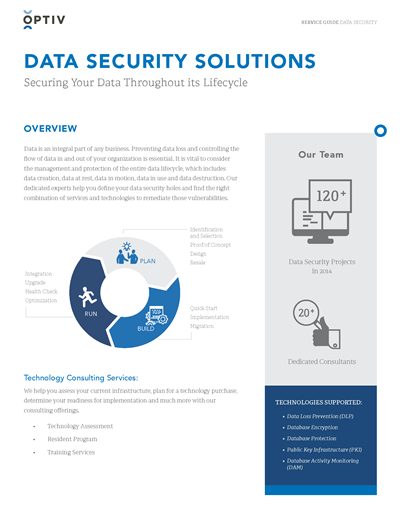Top Tips for Ensuring Secure Data Destruction in Your Cyber Security Plan
The Importance of Effective Information Damage Practices in Shielding Sensitive Information and Ensuring Computer Safety And Security
In a period where information breaches are increasingly typical, the value of efficient information devastation techniques can not be overemphasized. Organizations face significant risks when sensitive info is improperly disposed of, potentially resulting in unauthorized gain access to and serious monetary consequences. Executing robust data damage techniques not only reduces these risks but likewise lines up with legal compliance needs, making certain that companies maintain their online reputation and foster customer depend on. The concern remains: what specific strategies can be used to improve these practices, and just how can companies successfully integrate them right into their general cybersecurity framework?
Comprehending Information Damage
Recognizing data devastation is important in today's electronic landscape, where sensitive info can conveniently be compromised. Reliable information destruction entails not merely making certain but erasing documents that data is irretrievable with thorough techniques. This procedure is essential for organizations that manage personal customer information, copyright, or interior records, as any kind of breach can result in serious economic and reputational effects.
Data destruction includes different methods, consisting of shredding physical media, degaussing magnetic storage space gadgets, and employing software-based services that overwrite information numerous times. Each method offers a certain function and needs to align with the sensitivity of the details being gotten rid of. As an example, physical destruction is often preferred for hard disk drives having very personal information, while software program approaches may be enough for much less delicate info.
In addition, sticking to market standards and regulations, such as the General Information Defense Guideline (GDPR) or the Medical Insurance Transportability and Accountability Act (HIPAA), is critical for conformity and to alleviate lawful dangers. Organizations should develop a durable data destruction plan, train workers on best techniques, and frequently audit their treatments to make sure that all sensitive details is gotten rid of safely and effectively.
Threats of Inadequate Practices
Insufficient information damage practices subject organizations to considerable risks that can have significant consequences. When delicate information is not appropriately dealt with, it remains susceptible to unapproved gain access to, which can bring about data violations and identity theft. Such cases not only endanger the security of people yet also stain the organization's credibility, causing a loss of customer depend on and possible financial consequences.
Moreover, regulative conformity is significantly strict in lots of sectors. Failure to adhere to information devastation regulations can lead to large penalties and legal actions against organizations. These charges can divert and stress economic sources attention from core service procedures.
Furthermore, the misuse of residual information can bring about copyright burglary or corporate espionage, endangering affordable benefits (data destruction). The influence of inadequate data damage expands beyond immediate monetary losses; it can additionally cause lasting damages to brand name honesty and market position

Organizations need to acknowledge that information protection is not only concerning preventing violations; it also includes the accountable management of data throughout its lifecycle. Overlooking effective data devastation methods can have tragic effects, highlighting the need for durable procedures to alleviate these dangers.
Best Practices for Data Devastation
Carrying out efficient data destruction techniques is necessary for guarding sensitive information and keeping conformity with regulative standards. Organizations needs to take on a multi-faceted technique to guarantee that information is irretrievable, therefore protecting against unapproved access and possible violations.
First, data need to be categorized based upon sensitivity, permitting companies to apply proper destruction approaches customized to the level of danger. For electronic information, utilizing software-based data-wiping devices that adhere to sector requirements can effectively overwrite existing information. Physical destruction techniques, such as shredding or degaussing, are essential for tools that store delicate information, making sure complete elimination.
Establishing a clear data retention plan is important, describing for how long different sorts of info need to be kept prior to destruction. Routine audits of information storage systems are likewise necessary to determine unnecessary or out-of-date information needing removal.
In addition, training employees on the significance of information devastation and the particular methods to adhere to fosters a culture of safety within the company. Finally, maintaining paperwork of information destruction processes offers responsibility and sustains conformity with exterior regulations and internal policies. By sticking to these ideal techniques, companies can considerably alleviate the threats related to information direct exposure.
Legal and Compliance Considerations

Failing to follow these guidelines can read this cause serious fines, consisting of substantial fines and reputational damages. Organizations must execute a durable information destruction policy that lines up with these legal frameworks and supplies clear standards on the correct methods of information disposal, whether physical shredding or electronic cleaning.
Moreover, maintaining documentation of data damage tasks is crucial for showing conformity throughout audits or inspections. By prioritizing legal and compliance considerations, organizations can enhance their data safety and security pose and foster depend on with customers and stakeholders, eventually adding to a much more safe information administration atmosphere.
Advantages of Effective Data Damage
Efficient information destruction techniques expand beyond plain compliance; they offer substantial advantages to organizations that prioritize them. By making sure that delicate details is irretrievably ruined, organizations reduce the risk of data violations and the possible monetary consequences related to them. This proactive approach not just safeguards versus unauthorized access yet additionally improves the overall trustworthiness of the company in the eyes of customers and stakeholders.
Implementing durable data destruction approaches, such as physical damage of storage tools or sophisticated data cleaning methods, adds to the fortifying of a company's cybersecurity position. data destruction. It reduces the chance of intellectual residential or commercial property burglary and shields proprietary information, consequently preserving a competitive side out there

Verdict
To conclude, effective data damage methods are necessary for guarding sensitive information and enhancing general computer safety. By carrying out thorough approaches such as degaussing, shredding, and software overwriting, organizations can mitigate the risks associated with unauthorized access and information violations. Adherence to governing criteria, consisting of GDPR and HIPAA, additional reinforces compliance and shields versus lawful consequences. Ultimately, a commitment to durable information damage techniques fosters a society of duty, thereby strengthening a company's cybersecurity stance and preserving customer depend on.
